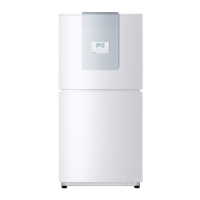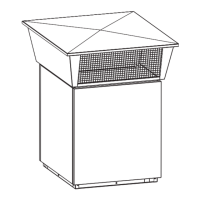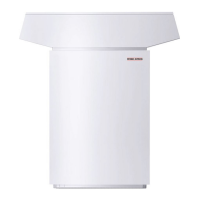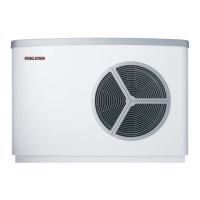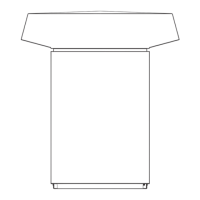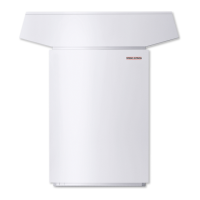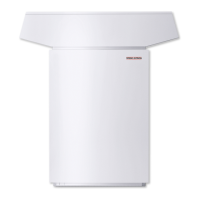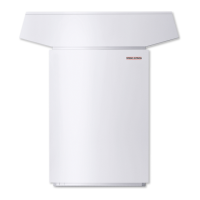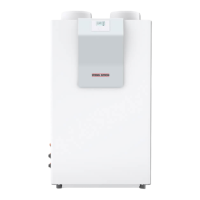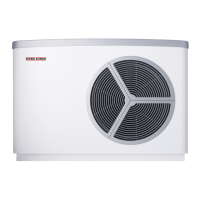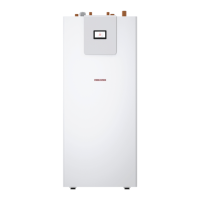1
2
26_03_01_0921
1 LEDs
2 Reset button
The following table shows the meaning of the LEDs on the IWS.
Red LED flashes Single fault. The appliance is shut down and re-
starts after 10minutes. The LED extinguishes.
Red LED illuminates
More than 5 faults within 2 hours run. The appli-
ance is shut down permanently and only restarts
following a reset on the IWS. This also resets the in-
ternal fault counter. The appliance can be restarted
after 10minutes. The LED extinguishes.
Green LED (centre)
flashes
The heat pump is initialising.
Green LED (centre) illu-
minates
The heat pump was initialised successfully and the
connection with the WPM is active.
Faults indicated by the red LED:
- High pressure fault
- Low pressure fault
- Central fault
- Hardware fault on the IWS (see fault list or message list for
the WPM heat pump manager)
16.3 Reset button
If the IWS was not initialised successfully, you can reset the set-
tings with this button.
For this, also observe chapter "Reinitialising the IWS" in the
heat pump manager instructions.
16.4 Resetting the high limit safety cut-out
The electric emergency/booster heater stops if the heating water
temperature exceeds 85°C, for example if the flow rate is too low.
26_03_01_1880
1
26_03_01_1880
1 Electric emergency/booster heater
Remove the cause of the fault.
D0000035383
Reset the high limit safety cut-out by pressing the reset
button.
Check whether the heating water is being circulated at a suf-
ficiently high flow rate.
16.5 Fan noise
The heat pump draws heat from the outdoor air. This causes the
outdoor air to cool down. At outside temperatures of 0°C to 8°C,
the air may be cooled to below freezing point. If, under these
conditions, precipitation occurs in the form of rain or fog, ice may
form on the air grille, the fan blades or the air routing pipes. If the
fan comes into contact with this ice, this creates noise.
How to remedy rhythmic scratching or grinding noises:
Check whether the condensate drain is clear of obstructions.
Check whether the design output and temperature are set
correctly. Ice formation is particularly pronounced when
a high heating output is demanded at moderate outside
temperatures.
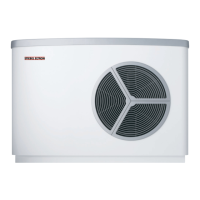
